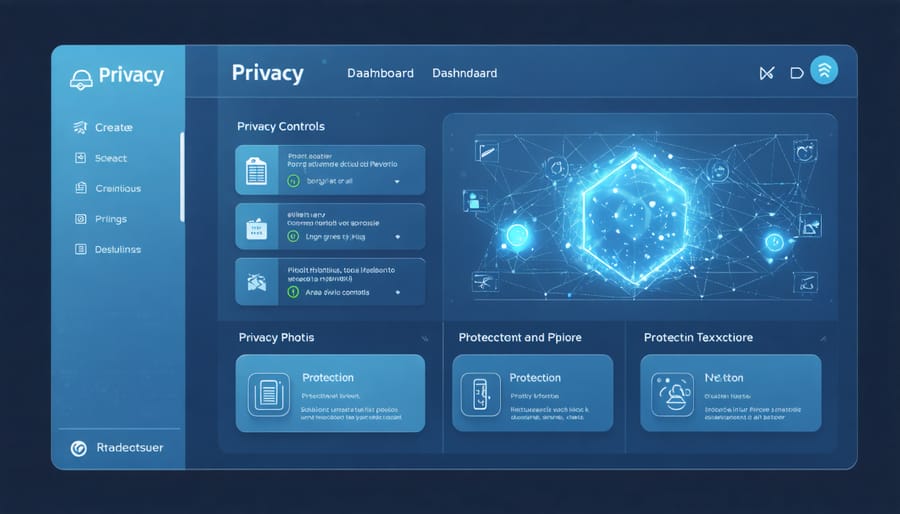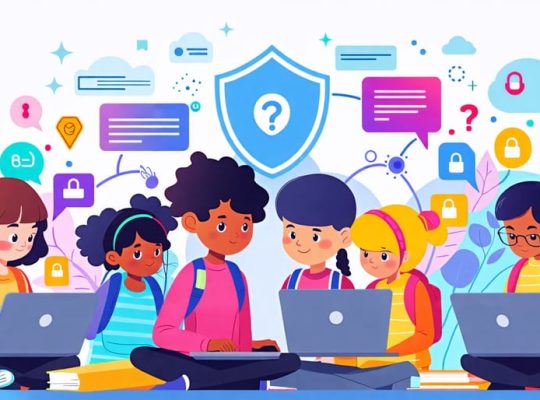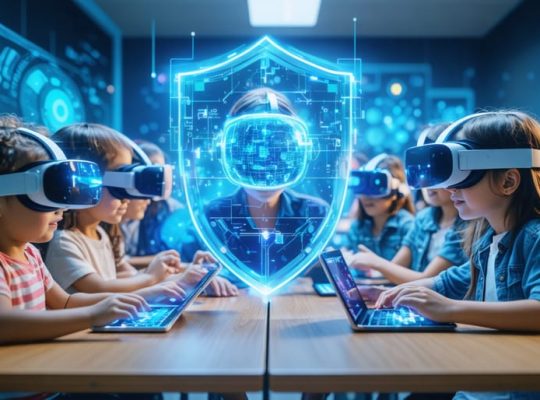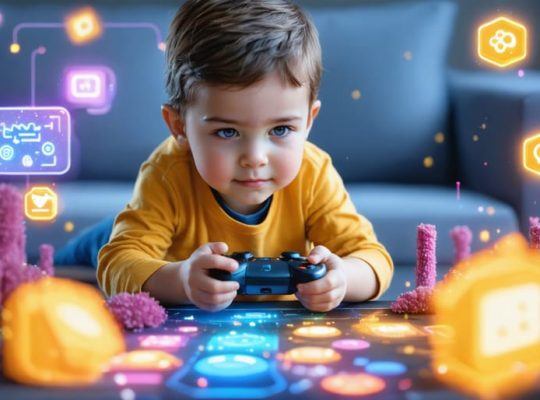In today’s digital landscape, artificial intelligence stands as a powerful guardian of our children’s online safety. As parents and educators, understanding how AI protects our kids online has become as essential as teaching them basic cyber safety essentials. AI-powered security tools now act like digital guardian angels, constantly monitoring online activities, detecting potential threats, and blocking harmful content before it reaches young eyes. These intelligent systems learn from patterns to identify cyberbullying, recognize dangerous conversations, and flag inappropriate content with remarkable accuracy. Unlike traditional security measures, AI adapts in real-time, providing a dynamic shield that evolves alongside new online threats. For families navigating the complex digital world, AI cybersecurity offers peace of mind while maintaining the delicate balance between protection and privacy – ensuring our children can explore, learn, and connect safely in their digital environment.

Understanding AI’s Role in Digital Safety
Smart Content Filtering
AI-powered content filtering acts as a vigilant digital guardian, helping protect children from inappropriate content while they explore the online world. These intelligent systems work continuously to analyze text, images, and videos in real-time, making split-second decisions about what content is safe and age-appropriate.
Much like a caring teacher who monitors classroom activities, AI algorithms learn to recognize concerning patterns and potentially harmful material. They can detect inappropriate language, violent imagery, and other unsuitable content before it reaches young eyes. What makes this technology particularly effective is its ability to adapt and learn from new examples, staying current with emerging online threats.
For parents and educators, this means having a reliable ally in maintaining a safe digital environment. The AI doesn’t just block content; it can also provide helpful alerts and reports, giving caregivers insight into potential online risks while respecting children’s privacy and independence.
Behavior Pattern Recognition
Think of AI as a vigilant friend who learns your child’s normal online patterns – like when they usually log in, what websites they visit, and how they typically interact online. When something unusual happens, like logging in from a different location or at an unusual time, AI quickly notices these changes and can alert parents or administrators.
For example, if your child normally uses educational apps between 3 PM and 6 PM on weekdays, AI would notice if someone tried to access their account at midnight. It can also detect if multiple failed login attempts occur or if there’s sudden unusual activity in their social media accounts.
This protective technology works quietly in the background, monitoring patterns without intruding on your child’s privacy. It’s like having a safety net that catches potential risks before they become serious problems. The AI system becomes more effective over time as it learns what’s normal for each user, making it increasingly accurate at spotting genuine security concerns.
Protecting Children from Cyber Threats
Cyberbullying Prevention
Artificial Intelligence is revolutionizing how we protect children from cyberbullying, offering new hope for parents and educators concerned about online harassment risks. Modern AI tools can analyze patterns in digital communications, identifying potential bullying situations before they escalate into serious incidents.
These intelligent systems work by monitoring various indicators, such as aggressive language, repeated negative interactions, and unusual communication patterns. For example, when Sarah, a middle school counselor, implemented an AI-based monitoring system, it helped identify and address cyberbullying cases that might have otherwise gone unnoticed.
“The technology acts like a vigilant digital guardian,” explains Dr. Maria Chen, a cybersecurity expert specializing in child safety. “It can detect subtle signs of harassment that humans might miss, while respecting privacy boundaries.”
Key features of AI-powered cyberbullying prevention include:
– Real-time monitoring of social media interactions
– Automatic detection of threatening language
– Smart filtering of inappropriate content
– Early warning systems for parents and teachers
– Sentiment analysis to identify emotional distress
These tools work alongside traditional prevention methods, creating a more comprehensive safety net for children in digital spaces. The goal isn’t to replace human oversight but to enhance our ability to protect young people while they navigate the online world.

Stranger Danger Detection
Artificial Intelligence has become a powerful ally in protecting children from online predators by analyzing patterns and behaviors that might indicate suspicious activity. Modern AI systems can monitor conversations across social platforms, identifying potential warning signs such as grooming behavior, inappropriate language, or attempts to extract personal information from young users.
These AI tools work by examining multiple factors simultaneously – the language used, timing of messages, attempts to move conversations to private channels, and even subtle manipulation tactics. For instance, if someone frequently asks children about their location, suggests keeping secrets, or tries to isolate them from their support network, the AI flags these interactions for review.
Dr. Sarah Chen, a child safety expert, explains: “AI acts like a vigilant guardian, processing thousands of conversations in real-time to spot patterns that might escape human detection. It’s particularly effective at identifying adults who may be posing as children.”
The technology also learns and adapts over time, becoming more accurate at distinguishing between normal peer interactions and potentially dangerous situations. Parents can receive alerts when concerning patterns emerge, allowing them to take appropriate action while maintaining their children’s privacy.
Many platforms now implement these AI systems alongside human moderators, creating multiple layers of protection. This combination helps ensure that children can safely explore online spaces while maintaining appropriate boundaries with strangers.
Balancing Protection and Privacy
Data Collection Concerns
While AI-powered cybersecurity tools offer tremendous benefits for protecting our children online, many parents naturally worry about data privacy and constant monitoring. It’s important to understand that AI’s impact on digital experiences extends to how personal information is collected and used.
Modern AI security systems typically gather data about online behavior, device usage, and potential threats. However, responsible developers are implementing privacy-by-design principles, ensuring that personal information is anonymized and protected. Many systems now use edge computing, which processes data locally on devices rather than sending everything to cloud servers.
As parents, you can take an active role in managing these privacy concerns. Look for AI security tools that offer transparent privacy policies, allow you to control what data is collected, and provide regular reports about monitoring activities. Consider discussing these tools with your children, helping them understand how AI protection works while teaching them about responsible digital citizenship. Remember, the goal is to find the right balance between keeping our children safe and respecting their privacy.
Age-Appropriate Protection
AI technology is revolutionizing how we protect children online by offering age-specific safety measures that grow and adapt with your child. For younger children, AI systems can create strict filtering mechanisms that block access to inappropriate content while allowing educational resources to flow through freely. These smart systems recognize child-friendly websites and apps, creating a safe digital playground for exploration.
As children enter their pre-teen years, AI adjusts its approach by implementing more nuanced protection. The technology begins to understand context better, allowing more freedom while still maintaining crucial safety boundaries. For instance, AI can detect and block cyberbullying attempts in social media messages while permitting normal peer communication.
For teenagers, AI security becomes more sophisticated, focusing on protecting against complex threats like social engineering and identity theft. The system recognizes that teens need more autonomy while still requiring protection from serious online risks. It can flag potentially dangerous interactions, suspicious download attempts, and unauthorized data sharing.
Dr. Sarah Chen, a child safety expert, explains, “AI’s ability to learn and adapt means it can provide the right level of protection at the right time, supporting healthy digital development while maintaining safety.”

Practical Tips for Parents
As parents, protecting our children online doesn’t have to be overwhelming, especially with AI-powered security tools at our disposal. Here are some practical steps you can take today to enhance your family’s cybersecurity:
Start with AI-enabled parental control software that can automatically detect and block inappropriate content. Look for solutions that offer real-time monitoring and adapt to new threats as they emerge. Many of these tools can now recognize and filter harmful content before it reaches your child’s screen.
Enable AI-powered authentication features on your children’s devices. This might include facial recognition or fingerprint scanning, which are more secure than traditional passwords and easier for kids to use consistently.
Install smart antivirus software that uses AI to identify unusual patterns and potential threats. These systems learn from new malware variants and can protect against previously unknown threats, keeping your family safer online.
Consider using AI-based monitoring tools that can alert you to signs of cyberbullying or online harassment. These tools analyze message patterns and content while respecting your child’s privacy, focusing only on potentially harmful interactions.
Make it a family activity to review security settings together. Talk about how AI helps protect your information, similar to having a digital guardian that watches for danger. This helps children understand the importance of cybersecurity while feeling empowered rather than restricted.
Remember to regularly update all security software, as AI systems become more effective with new data and learning experiences. Set automatic updates whenever possible to ensure you’re always protected with the latest security features.
Start small and gradually implement these tools as your family becomes more comfortable with them. The goal is to create a safe online environment while maintaining open communication about digital safety.
As we’ve explored throughout this article, AI plays a vital role in keeping our children safe online, but it’s important to remember that technology is just one part of the solution. While AI-powered tools can detect threats, block harmful content, and protect sensitive information, they work best when combined with open communication, digital literacy education, and active parental involvement.
Parents and educators should embrace AI cybersecurity solutions while maintaining a balanced approach to online safety. This means teaching children about responsible internet use, setting appropriate boundaries, and staying informed about the latest digital safety tools and practices.
Remember that no security system is perfect, and AI technology continues to evolve. The key is to stay vigilant, keep communication channels open with children, and regularly update safety measures. By combining the power of AI with thoughtful guidance and supervision, we can create a safer digital environment where our children can learn, grow, and thrive.
Let’s work together to harness AI’s potential while nurturing our children’s digital well-being through understanding, support, and proper guidance.







